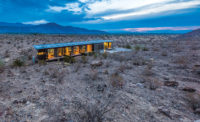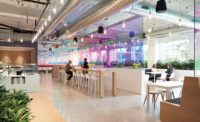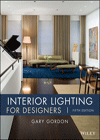Dark-Sky Design: Petersen Automotive Museum by KPF and Horton Lees Brogden
Los Angeles

Petersen Automotive Museum | Kohn Pedersen Fox & HLB Lighting Design
Photo © Raimund Kock Photography

Photo © Raimund Koch Photography


The steely body of KPF’s new shell for this museum’s existing structure is vibrant, yet the lighting was configured to minimize light pollution. This is largely due to the California Title 24 CalGreen section, which limits the amount of uplight per fixture to discourage facade uplighting, floodlighting, or other potentially invasive illumination sources. Horton Lees Brogdon lighting designer Clifton Manahan says, “The brief was to create something mysterious that hints at movement inside the building.” So the team employed dynamic color-changing LEDs, working with one manufacturer for consistent quality. For a wide range of colors and effects, he opted for four-color RGBW LEDs with optics that provide maximum light spread across the facade while minimizing glare. The output of each uplight was coordinated with the architectural shell, which serves as shielding to ensure the state’s limits were met. “Saturated-color light is more visible to the human eye than just white light,” says Manahan. “So the measured output of the fixtures and brightness of the building are fairly low but still visible.” This gives it a strong identity yet also curtails glare and light pollution.
Back to "Continuing Education: Dark-Sky Design"









